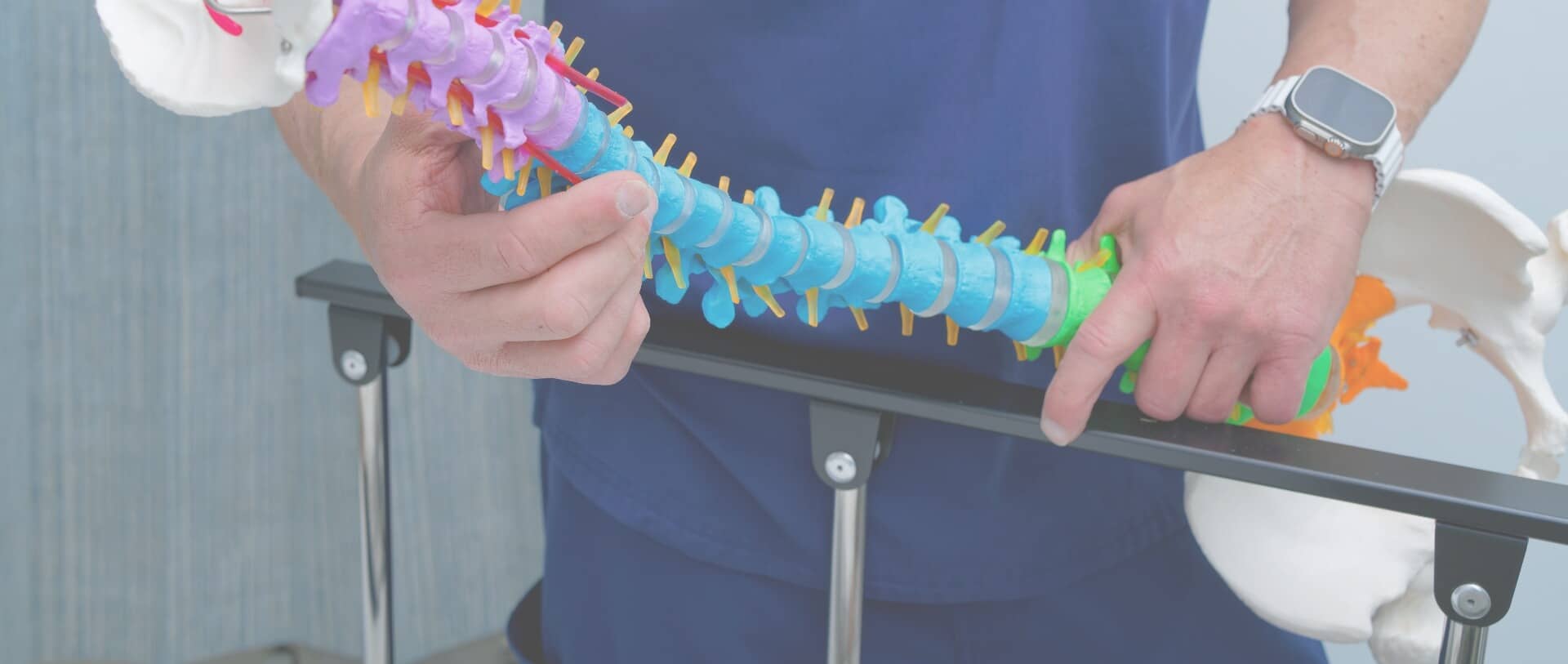
CONDITIONS
Upper Back Pain
Upper back pain can be a discomforting and restrictive condition that affects the area between the base of the neck and the bottom of the rib cage. This region, along with your mid-back, makes up the thoracic spine, which plays a vital role in supporting your upper body and protecting your organs. When issues like muscle strain, poor posture, or underlying spine conditions arise, they can lead to upper back pain. Call Gottlieb Spine to get a clear diagnosis of what’s causing your pain and how you can find upper back pain relief.
What Causes Upper Back Pain?
Understanding the underlying cause of your pain is essential for upper back pain relief. The upper back is made up of muscles and other soft tissues that support the neck and shoulders. When these muscles are strained or injured, they can cause pain in the upper back and neck. Upper back pain can have many causes, and it’s important to see a specialist for a clear diagnosis. Some of the most common causes of back pain include:
- Muscle strain: Overexertion, heavy lifting, or sudden movements can strain the muscles in the upper back, leading to pain and discomfort
- Poor posture or ergonomics: Slouching at a desk or in a chair that does not provide proper support and hunching over devices can upper back pain over time
- Herniated disc: If the affected intervertebral disc is located in the upper back, it can put pressure on nearby nerves and cause pain in that region
- Stenosis: Narrowing of the spinal canal can put pressure on the spinal cord and nerves, leading to upper back pain
- Scoliosis: An abnormal curvature of the spine can cause muscle imbalances, resulting in upper back pain.
What are the Signs and Symptoms of Upper Back Pain?
Upper back pain can occur on either side or in the middle of the back. The pain can be sharp or dull and can range from a constant ache to a sudden, intense pain. Some may experience upper left back pain, while others may have pain in the upper right back. This pain may also be accompanied by other symptoms, including:
- Stiffness and limited mobility
- Muscle tension
- Radiating pain
- Pain with movement
- Numbness and tingling
- Muscle weakness
- Headaches
How is Upper Back Pain Treated?
Upper back pain can be treated through both non-surgical and surgical approaches. The treatment approach Dr. Gottlieb will recommend depends on the underlying cause, severity of symptoms, and your overall health. Surgical intervention for upper back pain is generally considered when non-surgical treatments have failed to provide relief, and when the pain is significantly affecting your quality of life.
Non-Surgical Treatment For Upper Back Pain
Many cases of upper back pain can be treated efficiently with the following conservative treatments:
- Rest and activity modification: Avoiding activities that worsen your pain and allowing your body to rest can help alleviate symptoms of upper back pain. Light physical activity like stretching or yoga can improve circulation and reduce pain.
- Physical therapy: A physical therapy program can be designed to improve posture, strengthen muscles, and promote flexibility in the upper back and surrounding area
- Pain management: Over-the-counter pain relievers, such as ibuprofen, can help manage mild to moderate upper back pain. For more severe pain, your doctor may prescribe a stronger medication.
- Heat and ice therapy: Applying heat or ice packs to the affected area can help reduce muscle tension and alleviate discomfort
- Posture correction: Because poor posture is a common cause of upper back pain, proper posture and ergonomics during various activities can help prevent and manage pain
Surgical Treatment for Upper Back Pain
Surgery for upper back pain is typically reserved for severe structural problems in the spine. Surgical procedures that address the causes of upper back pain include:
- Spinal Fusion: Spinal fusion stabilizes the spine by fusing two or more vertebrae, and can be used to treat degenerative disc disease, spine fractures, or certain spinal deformities.
- Laminectomy: A laminectomy involves removing a portion of the lamina to relieve pressure on the spinal cord or nerves. It can be used to treat conditions like spinal stenosis.
- Discectomy: This procedure involves the removal of a portion of a herniated disc. This can help alleviate pain in the upper back if the damaged disc is located in that region of the spine.
- Foraminotomy: The foramen is widened to relieve nerve compression caused by conditions like a herniated disc or bone spurs
- Kyphoplasty or Vertebroplasty: These procedures are used to treat vertebral compression fractures by injecting bone cement into the fractured vertebra, stabilizing it, and reducing pain.

Top Quality Care at Gottlieb Spine
Upper back pain can greatly impact your daily life, limiting your mobility and affecting your overall comfort. This discomfort can stem from various causes, including muscle strain, poor posture, or underlying spine conditions. When suffering from upper back pain, seeking a comprehensive diagnosis and prompt treatment is crucial. Contact the experts at Gottlieb Spine to determine the source of your pain and explore your options for treatment. Dr. Jamie Gottlieb and his team are dedicated to restoring your upper back health and enhancing your overall well-being.
SCHEDULE A CONSULTATION